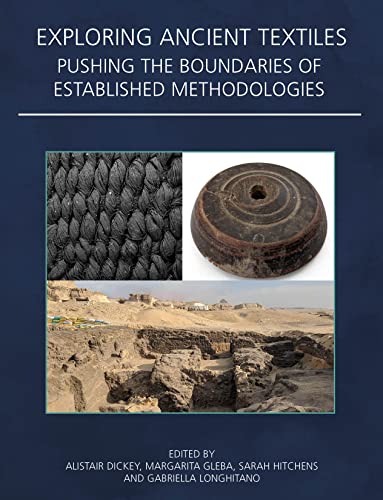Product desciption
Exploring Ancient Textiles Pushing The Boundaries Of Established Methodologies Alistair Dickey by Alistair Dickey, Margarita Gleba, Sarah Hitchens, Gabriella Longhitano 9781789257250, 1789257255 instant download after payment.
Over the past 30 years, research on archaeological textiles has developed into an important field of scientific study. It has greatly benefited from interdisciplinary approaches, which combine the application of advanced technological knowledge to ethnographic, textual and experimental investigations. In exploring textiles and textile processing (such as production and exchange) in ancient societies, archaeologists with different types and quality of data have shared their knowledge, thus contributing to well-established methodology. In this book, the papers highlight how researchers have been challenged to adapt or modify these traditional and more recently developed analytical methods to enable extraction of comparable data from often recalcitrant assemblages. Furthermore, they have applied new perspectives and approaches to extend the focus on less investigated aspects and artifacts.
The chapters embrace a broad geographical and chronological area, ranging from South America and Europe to Africa, and from the 11th millennium BC to the 1st millennium AD. Methodological considerations are explored through the medium of three different themes focusing on tools, textiles, and fibers, and culture and identity. This volume constitutes a reflection on the status of current methodology and its applicability within the wider textile field. Moreover, it drives forward the methodological debates around textile research to generate new and stimulating conversations about the future of textile archaeology.
Table of Contents
List of Contributors and Editors
Preface
Ian Shaw
Ancient tools and textiles: Thinking outside the box
Gabriella Longhitano, Sarah Hitchens, Alistair Dickey and Margarita Gleba
Part I: Application of Analytical Techniques on Tools
1.Preliminary remarks on some wear traces on Egyptian and Levantine textile tools
Chiara Spinazzi-Lucchesi
2.Visible tools, invisible craft: an analysis of textile tools in Iron Age Cornwall
Lewis Ferrero
3.Tools and their products: spindle whorls decorated by yarn impressions from Iron Age Donja Dolina in Northern Bosnia and Herzegovina
Julia Kramberger
4.Shears in the ancient world: A comparison between the Iberian culture of southern Spain and Roman culture in northern Italy
Patricia Rosell Garrido and Fabio Spagiari
Part II: Application of Analytical Techniques on Textiles and Fibres
5.Early fibre production in the west coast of South America: The case of plant-fibre technology of the south coast of Peru
Camila Alday
6. Humans, wool textiles, chronology and provenance: a case study from the Orenburg region in the southern Urals, Russia
Natalia Shishlina, Olga Orfinskaya, Daria Kiseleva, Anna Mamonova, Lidia Kuptsova, and Tomasz Goslar
7.Using textiles to reconstruct looms: burial shrouds from Deir el-Banat (Fayum, Egypt)
Olga Orfinsaya and Darya Klyuchnikova
8.EDS analysis of Neolithic to Early Dynastic Egyptian woven cloth in the Bolton Museum collection
Alistair Dickey
9.A post-excavation study using the archaeothanatological approach to determine the possibility of wrapping in Early Bronze Age burials
Eleanor James
Part III: Cultural and Personal Identity
10.Beyond textile production: What textile tools can tell us about networks of craftspeople and cultural identity
Gabriella Longhitano
11.Textiles and human needs. A discussion of textile production in the Hallstatt Culture
Karina Grömer
12.Textile tools and textiles from the ninth–eighth century BC necropolis of Incoronata (Basilicata, Italy): Evidence for culture, status and specialisation in south Italian indigenous community
Francesco Meo
13.Translating sailcloth into raw materials, land, and labour
Lise Bender Jørgensen
Afterword
Lin Foxhall


